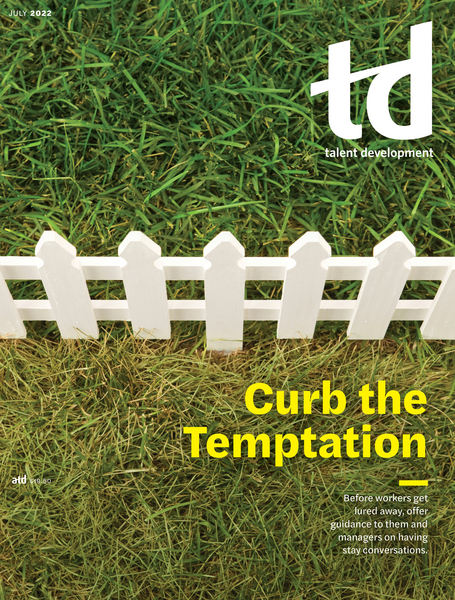TD Magazine Article
Let’s Talk About Mental Health
Talent developers can start and continue discussions and training programs around this important topic.
Wed Jun 01 2022
"How are you really doing?" "Are you doing all right?" At one time, those were questions close friends and family members asked, rather than talent developers or people managers. But that has changed in the past two years.
According to the US Centers for Disease Control and Prevention, "Mental health includes our emotional, psychological, and social well-being. It affects how we think, feel, and act." That means individuals don't leave it at the door when they start their workday.
How can talent development professionals help organizations address the mental health issues that are affecting so many people? In "Engage in Mental Health and Well-Being," Catherine Wemette notes that you can educate people leaders and employees alike on mental health warning signs, such as changes in behavior and an individual venting their grievances about work via social media.
Encourage employees, especially managers, to practice active listening skills with others. That can help individuals feel less alone. While companies can't force deep connections, you can work with your organization to intentionally guide inclusivity, such as by creating teams and designing office spaces where people can connect.
Additionally, flexibility in schedules, workplace locations, and roles can aid individuals' mental wellness. Job crafting can fill psychological needs of autonomy, relatedness, and connection. Assist people leaders in accepting new ways for their direct reports to work.
These tips were adapted from the June 2022 issue of TD at Work. Learn more at td.org/TDatWork.

